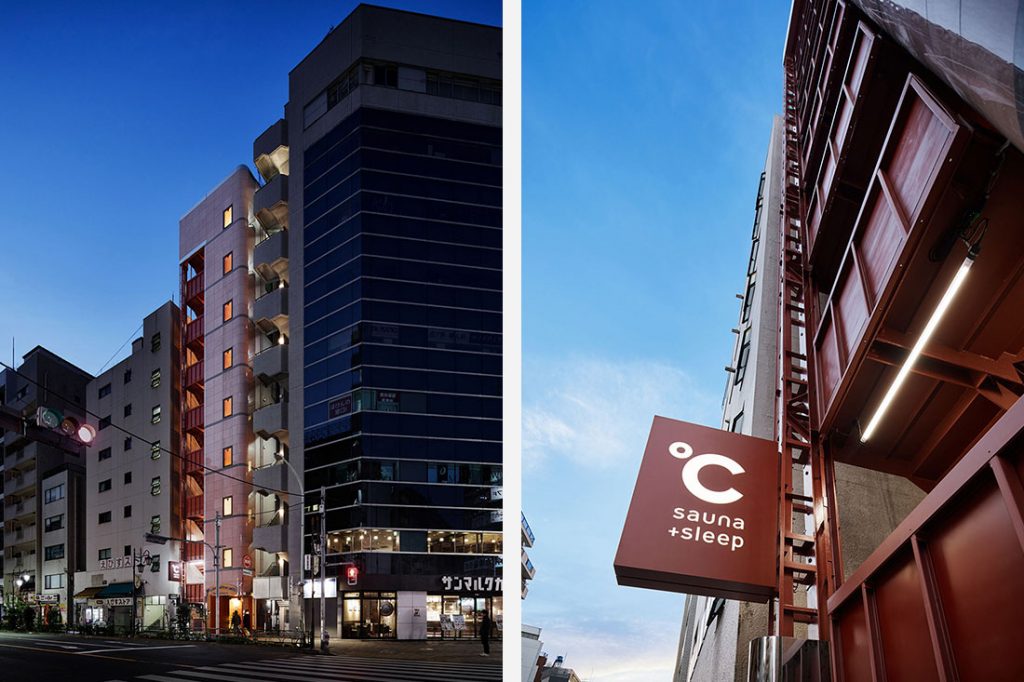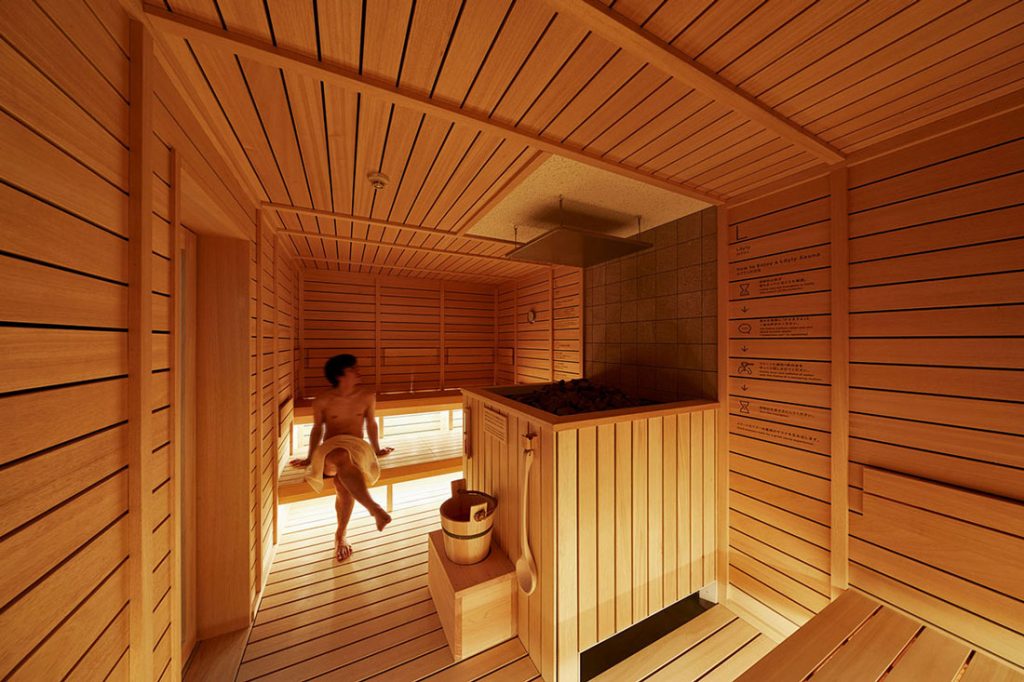Remember Japanese capsule hotels? Although Tokyo is still littered with them, many conjure up a kitsch fad that has passed its heyday. Faced with the task of renovating one, Schemata Architects embraced a no-nonsense retro aesthetic to unite the two activities of sleeping and steaming.
Temperature is the resultant equilibrium of thermal energies interacting. Similarly, the capsule hotel °C Do-C, Ebisu (ºC) can be read as the harmonised outcome of the interplay between two different creative energies.
°C is a new spin-off brand from the successful ‘ninehours’ (9h) capsule hotel chain, which is renowned for its uber-minimalist interpretation of capsule hotels. °C also represents several significant departures from 9h: the brand renovates existing capsule hotels (a sound business decision given the prohibitive construction costs in Japan today), with saunas as featured amenities.
The raw aesthetic of Schemata Architects’ work emerges from its underlying creative principle of subtraction, traceable to early projects such as HAPPA (2007) and Sayama Flat (2008). This approach of removing non-essential elements to derive an unadulterated context can be observed in °C. The designers first decanted the contents of the original capsule hotel to separate out its core element – the capsule – and then used it to inform the design premise.

For example, the palette for the scheme had to revolve around the retro beige colour of the capsules. This led to the richness and warmth of the overall materiality, which now aligns with the image of °C. The coordinated material treatment also extends from interior to exterior, where a steel escape staircase was stripped and refinished in a reddish-brown corrosion-resistant paint. The rest of the façade was painted in the same shade, which has become the building’s signature colour.

The iconic look of the capsules also provided a connection to the origins of capsule hotels, which helps set the tone for a brand that is evolving the typology. In fact, saunas were intentionally added by the architects to evoke the stereotypical relationship between saunas and capsule hotels in Japan, as well as complementing the branding of °C.

In Japan, saunas were imported from Finnish culture so that public bathhouses remained relevant in the wake of bathtubs becoming increasingly commonplace. In line with this historical narrative and the notion of subtraction, the architects not only sought to create a more authentic sauna experience but also a more intimate one. Waterproofed Fibre Reinforced Panels separate the shower cubicles, allowing one to both see and be seen.
Although Schemata Architects’ works can be consumed aesthetically for their powerful material composition, it is a much more rewarding experience to take time to uncover the layers that the architects have embedded within the designs. This approach allows a taste of the true depth of the studio’s work.
Get a Japanese design fix in Australia, we’ve put together our top 6 picks.
A searchable and comprehensive guide for specifying leading products and their suppliers
Keep up to date with the latest and greatest from our industry BFF's!

Sub-Zero and Wolf’s prestigious Kitchen Design Contest (KDC) has celebrated the very best in kitchen innovation and aesthetics for three decades now. Recognising premier kitchen design professionals from around the globe, the KDC facilitates innovation, style and functionality that pushes boundaries.

Suitable for applications ranging from schools and retail outlets to computer rooms and X-ray suites, Palettone comes in two varieties and a choice of more than fifty colours.

Marylou Cafaro’s first trendjournal sparked a powerful, decades-long movement in joinery designs and finishes which eventually saw Australian design develop its independence and characteristic style. Now, polytec offers all-new insights into the future of Australian design.

Savage Design’s approach to understanding the relationship between design concepts and user experience, particularly with metalwork, transcends traditional boundaries, blending timeless craftsmanship with digital innovation to create enduring elegance in objects, furnishings, and door furniture.

Extrapolating the typology of farmhouse architecture, Cameron Anderson Architects (CAARCH) has drawn on the local architecture of Mudgee in both form and materiality to deliver a surprising suite of buildings.

Eccentricity and refinement blend at Giant Steps Wines’ new Tasting Room – a picture-perfect place for guests to wine down.
The internet never sleeps! Here's the stuff you might have missed

Art, design, architecture and hospitality all combine perfectly at The Ritz-Carlton, Melbourne by BAR Studio and Cottee Parker.

Swiss home appliance designer and manufacturer V-ZUG’s first Sydney studio is a unified expression of the brand’s boutique, sustainable and design-led identity.